Bird migration may seem like a timeless natural phenomenon, but the way birds migrate is shifting dramatically, with profound implications for ecosystems and biodiversity.
Here are just a few examples:
- Swallows and swifts are shifting arrival and departure times to align with shifting insect abundance.
- A population of Arctic geese has adopted new migration routes and breeding locations 622 miles from their original stomping grounds.
- Some species are abandoning migration altogether, overwintering in regions they once left behind.
In my local village in the heart of Europe, white storks—traditionally a long-distance migrant wintering in tropical Sub-Saharan Africa as far south as South Africa—are overwintering in local wetlands in growing numbers instead of making the journey south.
(function(d,u,ac){var s=d.createElement(‘script’);s.type=’text/javascript’;s.src=’https://a.omappapi.com/app/js/api.min.js’;s.async=true;s.dataset.user=u;s.dataset.campaign=ac;d.getElementsByTagName(‘head’)[0].appendChild(s);})(document,123366,’uifl1zoju5dzvy98iikn’);
The same is true as far north as the UK: white storks now overwinter in increasing numbers, feeding on human-generated food sources like landfill waste. Similarly, blackcaps have adapted to eat berries and seeds in urban gardens, allowing them to remain through winter.
In fact, numerous avian species now spend significantly more time on their European breeding grounds, cutting short their stays in North and Sub-Saharan African wintering areas, with widespread consequences.

Why and when do birds migrate?
Birds migrate to find the best conditions, moving between breeding and non-breeding areas as seasons change. Migration is typically triggered by environmental cues such as:
- daylight length,
- temperature,
- food availability.
In the spring, many avian species travel from wintering grounds in warmer climates to temperate or Arctic regions where abundant food, such as insects and seeds, supports breeding and raising chicks.
In the autumn, as food sources dwindle and temperatures drop, they return to milder climates. This cyclical journey allows birds to exploit seasonal resources while avoiding harsh conditions, making migration a vital strategy for many species’ survival.
With earlier springs and warming temperatures, what has seemed timeless is changing.

Shorter Journeys, Longer Stays: Long-Distance Bird Migrations
A study published in Global Change Biology highlights two key trends in the behavior of long-distance migratory birds: earlier spring arrivals and later autumn departures.
The authors noted that over the past few decades, the duration of stay for many species on their European breeding grounds has increased by more than two weeks, while their presence in African non-breeding areas has decreased by over two months.
This phenomenon is particularly evident among species that use the East Atlantic flyway, a migration route used by about 90 million birds annually, passing from breeding areas in North America, Greenland, Iceland, the United Kingdom, and western Europe and on to southern Africa. It is one of the eight major flyways used by waders and shorebirds worldwide.
As growing seasons in Europe extend and food remains abundant for longer, birds like warblers and thrushes find it advantageous to linger on their breeding grounds. In contrast, many African avian habitats face worsening drought conditions and declining vegetation, which deters birds from overwintering there.
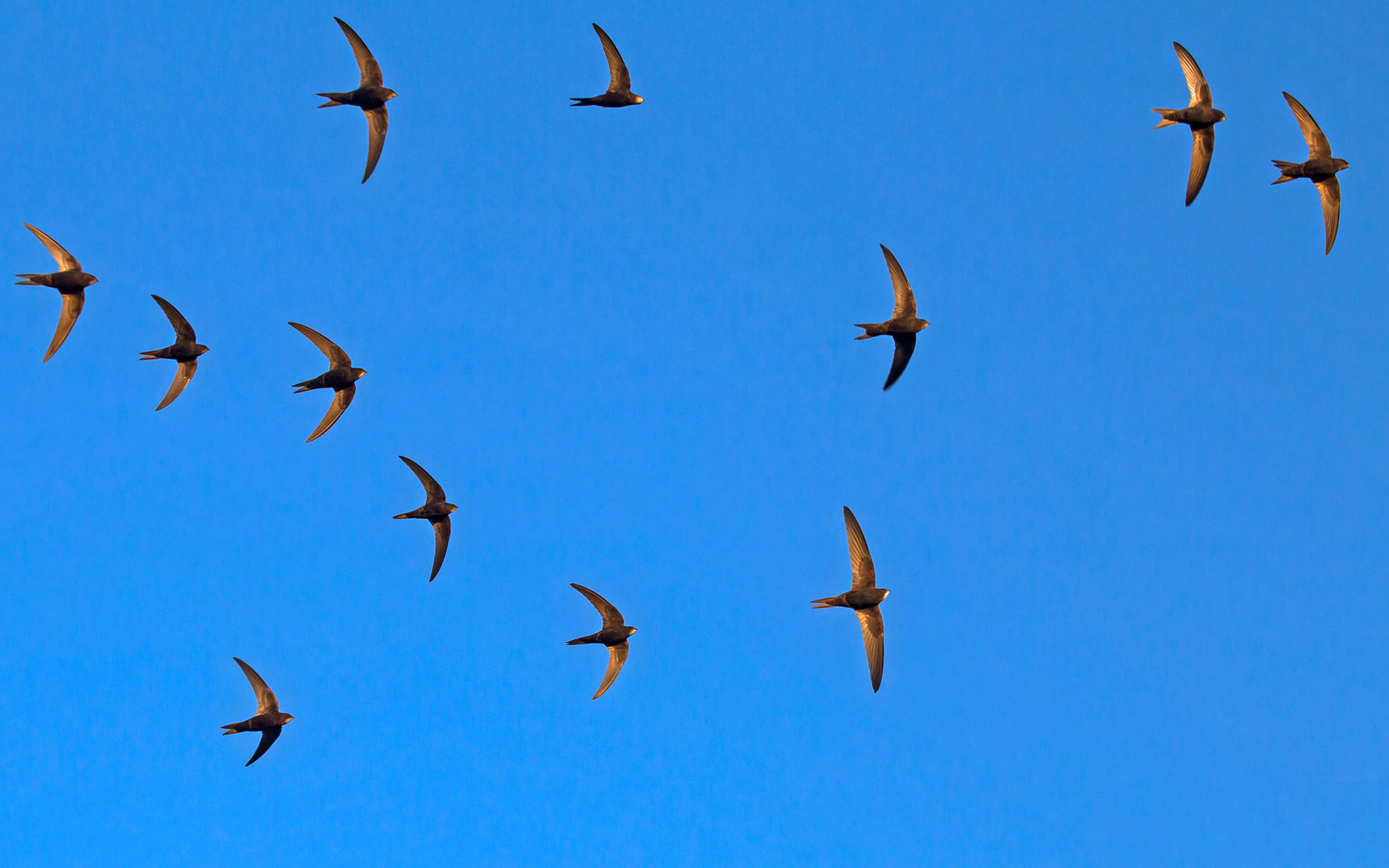
A flock of black swifts
Delayed Departures: Shifting Bird Migration Timelines
Delayed migration has become increasingly common among UK and European bird species. These delays often occur due to milder autumn and winter temperatures, allowing birds to remain on their breeding grounds longer. Extended food availability and altered environmental cues also contribute to these shifts.
While these changes may illustrate species resilience and even benefit individual species in the short term, they risk creating mismatches with ecosystems that rely on traditional migratory behaviors.
Species Delaying Migration from the United Kingdom include:
- Eurasian Cuckoo (Cuculus canorus): Research from the British Trust for Ornithology (BTO) shows that cuckoos are struggling to adjust migration timing to match changing environmental conditions. While spring arrivals remain consistent, some individuals delay their departure from breeding grounds, creating potential mismatches with wintering areas. (bto.org)
- Common Quail (Coturnix coturnix): Quails have exhibited delayed arrivals and departures, particularly during years with unusual weather patterns. Observations in the UK noted a late influx of quails in mid-summer due to persistent northerly winds. (bto.org)
- Swifts (Apus apus): Swifts are leaving the UK later than usual in response to warmer autumn temperatures and changes in food availability. This behavior may benefit populations in the short term, but risks disrupting established migratory cycles. (rspb.org.uk)
These shifts underscore the need for continuous monitoring and adaptive conservation strategies to address the implications of delayed departures for migratory species.
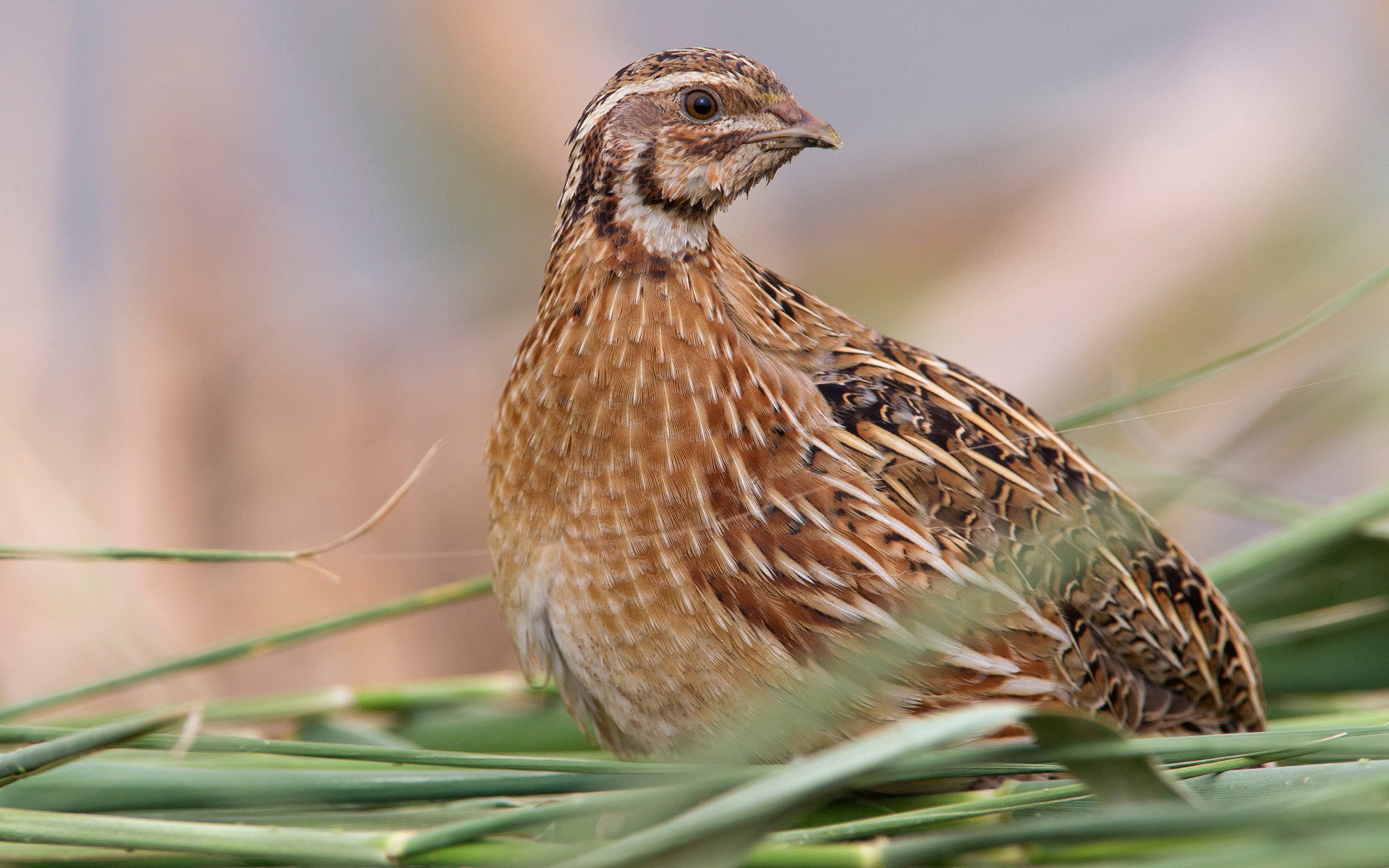
A common quail
Consequences for Ecosystems Across Continents
Bird migration plays a crucial role in connecting ecosystems across the globe, enabling the flow of nutrients, energy, and organisms between habitats. Migratory birds contribute significantly to ecosystem health by dispersing seeds, pollinating plants, and controlling insect populations.
Warblers and thrushes aid in vegetation regeneration by dispersing seeds during their journeys. Predatory birds migrating across continents help regulate prey populations, maintaining ecological balance.
When migration patterns shift or stop altogether, these ecological services are disrupted.
The absence of migratory birds in traditional wintering areas can lead to declines in plant regeneration as well as unchecked insect populations. Predators that rely on migratory birds as prey, such as hawks and falcons, may also experience declines.
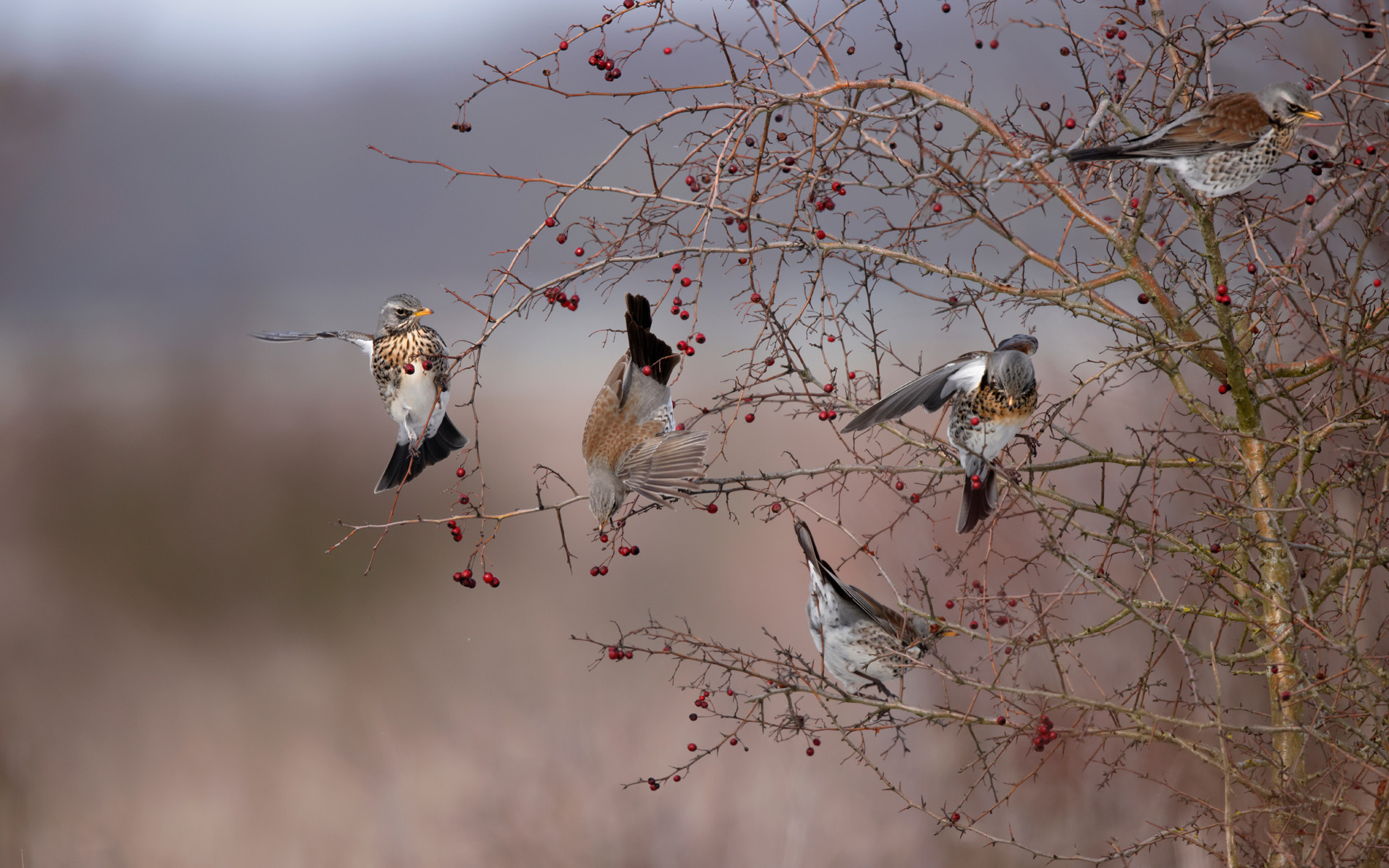
Fieldfare thrushes, winter visitors in the UK
The consequences across Africa are profound. Birds that once played key roles in seed dispersal, pollination, and insect control (like warblers and finches) are now largely absent during the dry season, reducing the spread of vegetation.
This loss, in turn, impacts soil health and biodiversity, intensifying challenges like desertification and reduced agricultural productivity.
Likewise, birds that no longer migrate concentrate their impacts in a single region, leading to increased competition for food and resources with other resident species. Across Europe, the extended stay of migratory species places additional pressure on food resources and nesting sites, increasing competition with resident species.
Prolonged presence of migratory birds in Europe is straining ecosystems, leading to increased competition with resident species for limited resources. Protecting habitats with new strategies on both continents is essential to maintaining the balance that sustains these interconnected ecosystems.
> Read more from WWF on Why Connectivity Matters to Wildlife and People
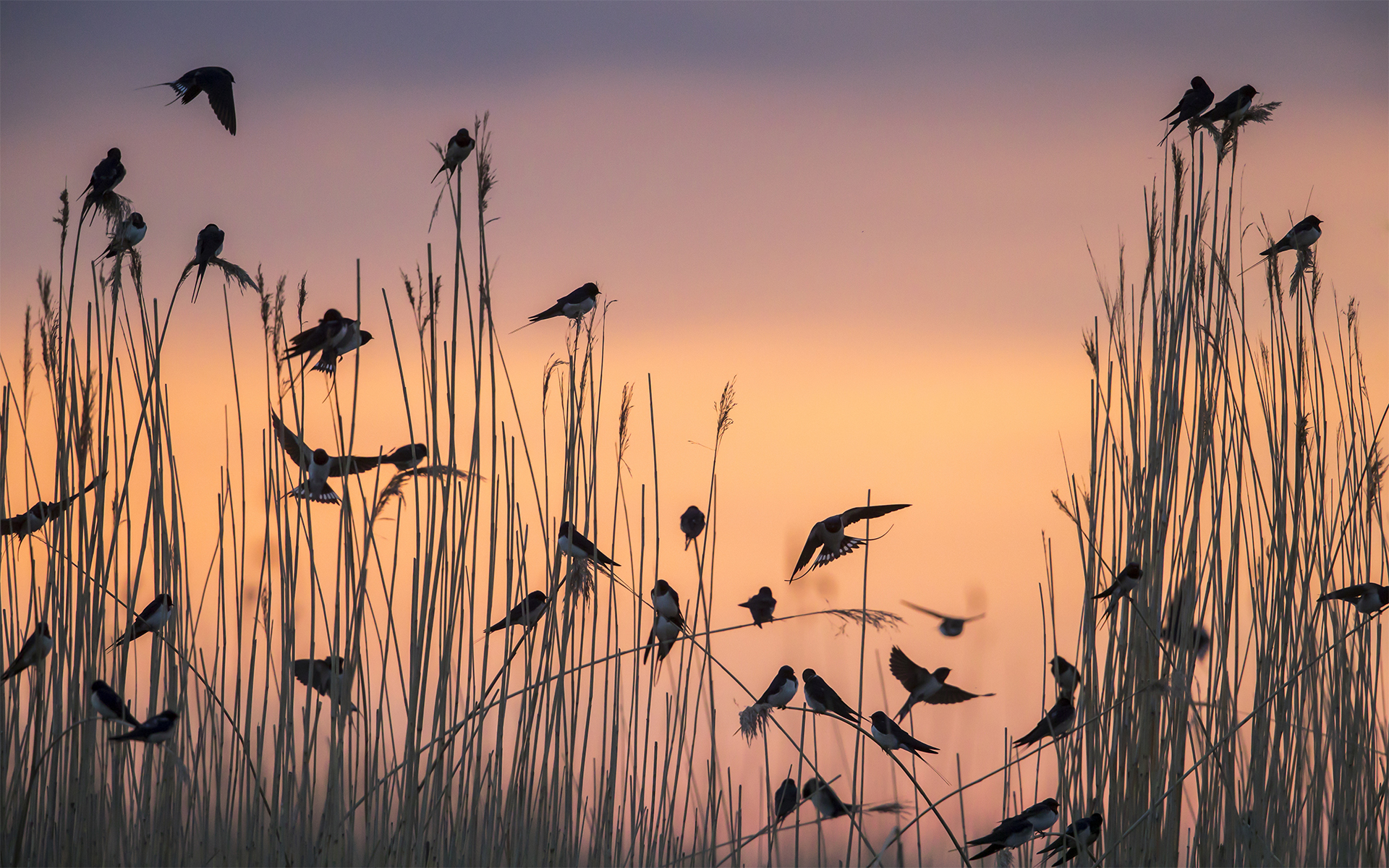
Barn swallows
Conservation Intervention for Migrating Bird Populations
Shifts in migration timing can also create mismatches—birds arrive at breeding or feeding grounds too early or late to coincide with peak resource availability, reducing their reproductive success.
Warmer springs mean that caterpillars hatch, grow and pupate earlier. This has consequences for birds that cannot eat caterpillars that have entered the pupal stage—when the food supply runs out earlier in the spring, more and more chicks starve during breeding season.
This is a big problem for migratory birds that spend their summers in Europe and winters in Africa, as they can’t know how early spring will arrive at their destination. Could the problem be solved if the migratory birds simply flew farther north until they found a place with suitably developed caterpillars? Could we help them find those new locations?
To test this idea, Swedish researchers moved a group of pied flycatchers that had arrived prior to breeding in the Netherlands. The birds were driven 373 miles to an area of pine forests outside Lund in Skane, Sweden, and released. The peak of caterpillar availability in Skåne is about two weeks later than in the Netherlands.
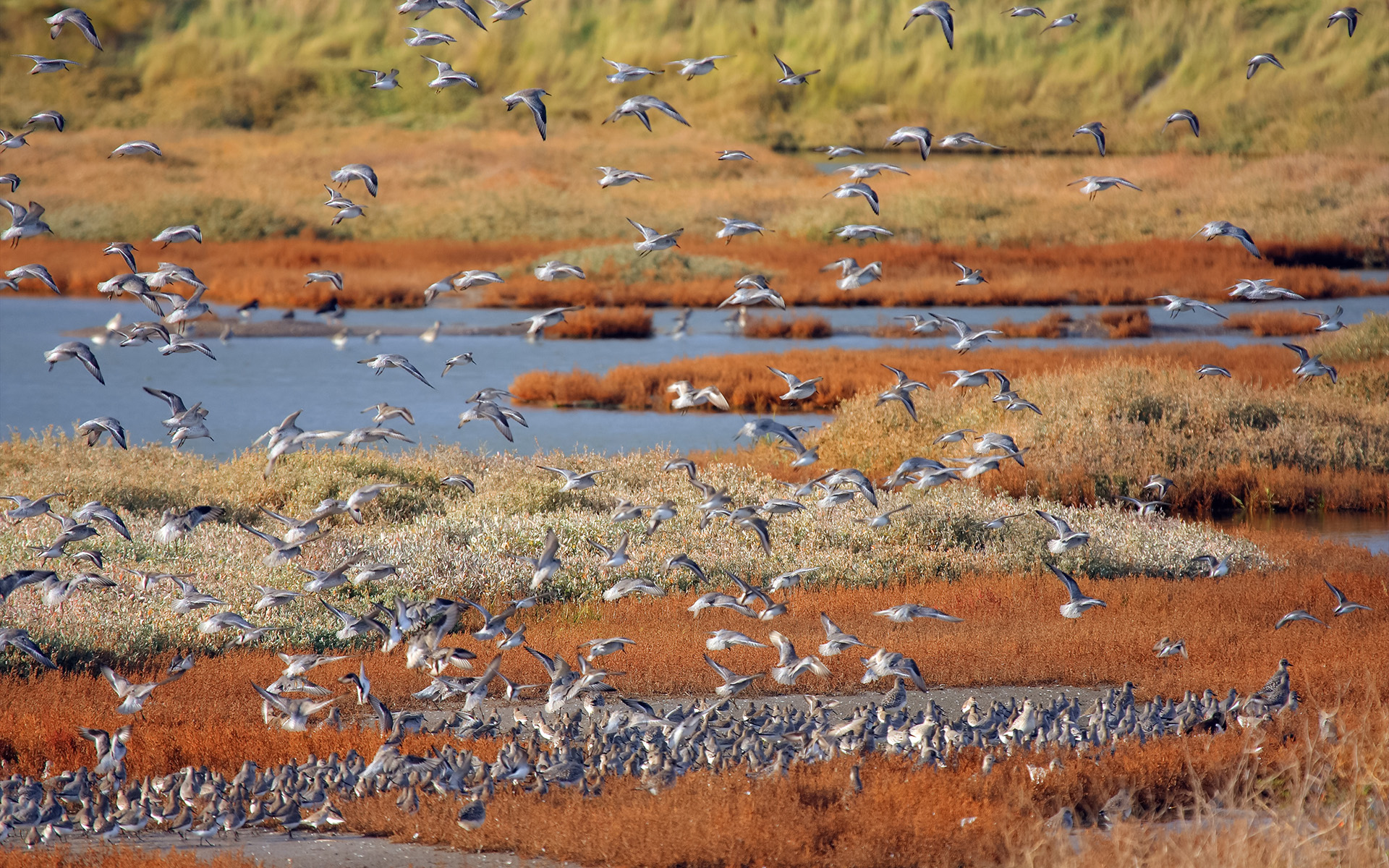
Flock of Waders on Saltmarsh on Essex Coast
The birds that were given a lift from the Netherlands to Skane synchronized very well with the food peak:
- They had significantly higher breeding success rates than the pied flycatchers that remained in the Netherlands.
- Their chicks did not stop in the Netherlands when they returned after their first spring migration, but continued to the area in Sweden where they were born.
- They arrived earlier and had more well-fed chicks the year after the researchers moved the pied flycatchers.
The number of small birds, particularly migratory birds, has decreased dramatically throughout Europe. Relocating this population kept them in tune with needed food resources, bringing hope that robust populations of pied flycatchers and other small birds like them can be maintained, even though springs are arriving ever earlier.
Where else could similar conservation initiatives support species resilience?
>> For more examples, check out Climate Change Complexities of Bird Migrations
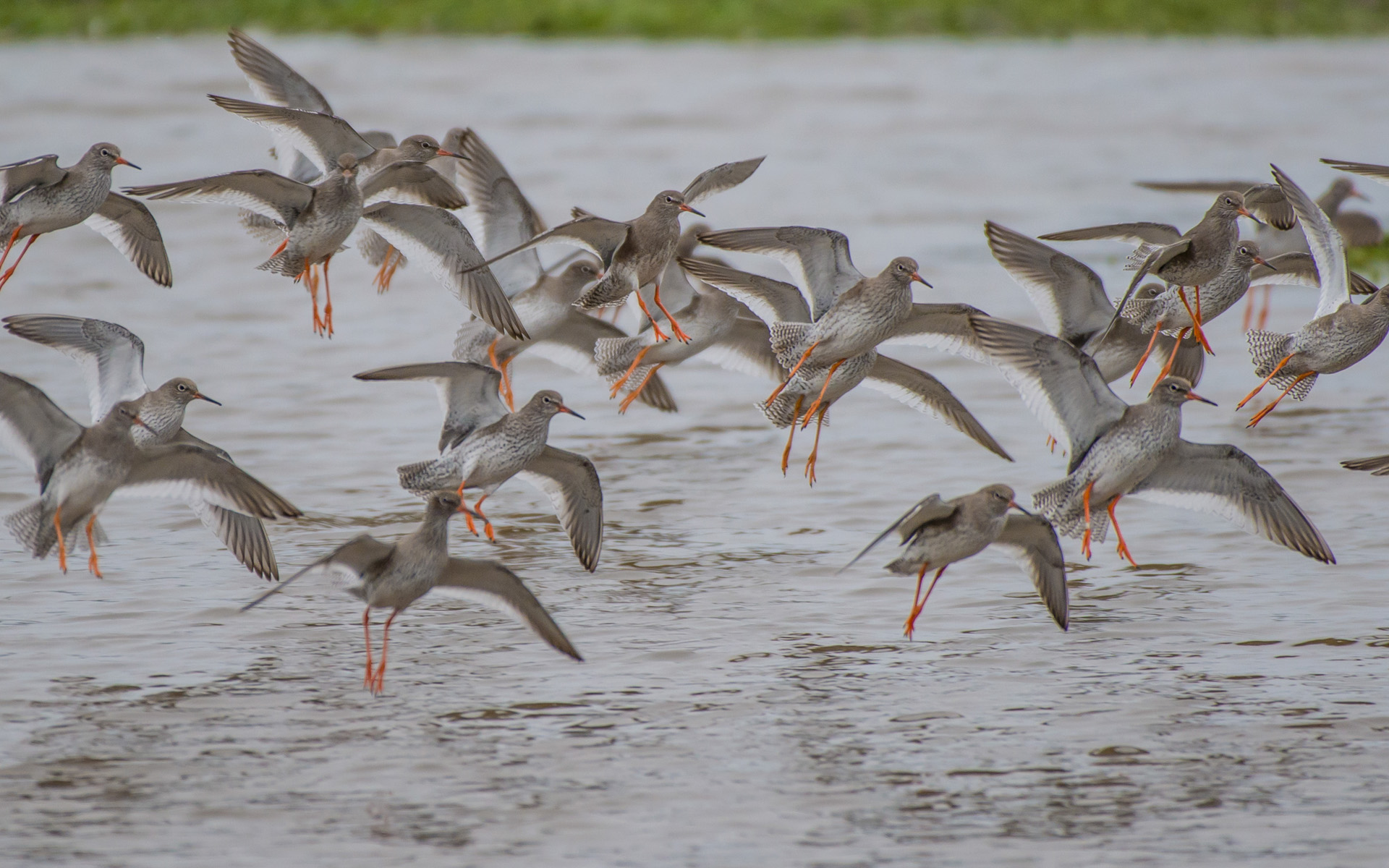
Redshanks landing, Slimbridge, England
Slimbridge Wetland Center: A Sanctuary for Birds
On Nat Hab’s The Cotswolds: Exploring English Nature itineraries, guests witness British avian conservation at its best at the Slimbridge Wetland Center, a 650-acre wetland reserve along the Severn Estuary. The Slimbridge Wetland Center offers a vital sanctuary and research expertise for migratory and resident birds.
Established in 1946 by Sir Peter Scott, son of Antarctic explorer Captain Robert Scott, Slimbridge is a flagship site of the Wildfowl & Wetlands Trust (WWT), combining science, conservation and public education to protect wetland habitats worldwide.
Scott created the IUCN Red List to assess species conservation status, chaired the founding of World Wildlife Fund (WWF) and designed its iconic panda logo. At Slimbridge, visitors can experience his legacy firsthand, exploring a mosaic of reedbeds, grazing marshes, ponds, and flooded meadows that teem with life.
Known as the “Avian Serengeti,” Slimbridge attracts a vast array of bird species throughout the year. Winter visitors may see whooper swans, golden plovers, and lapwings, alongside the rare Eurasian bittern.
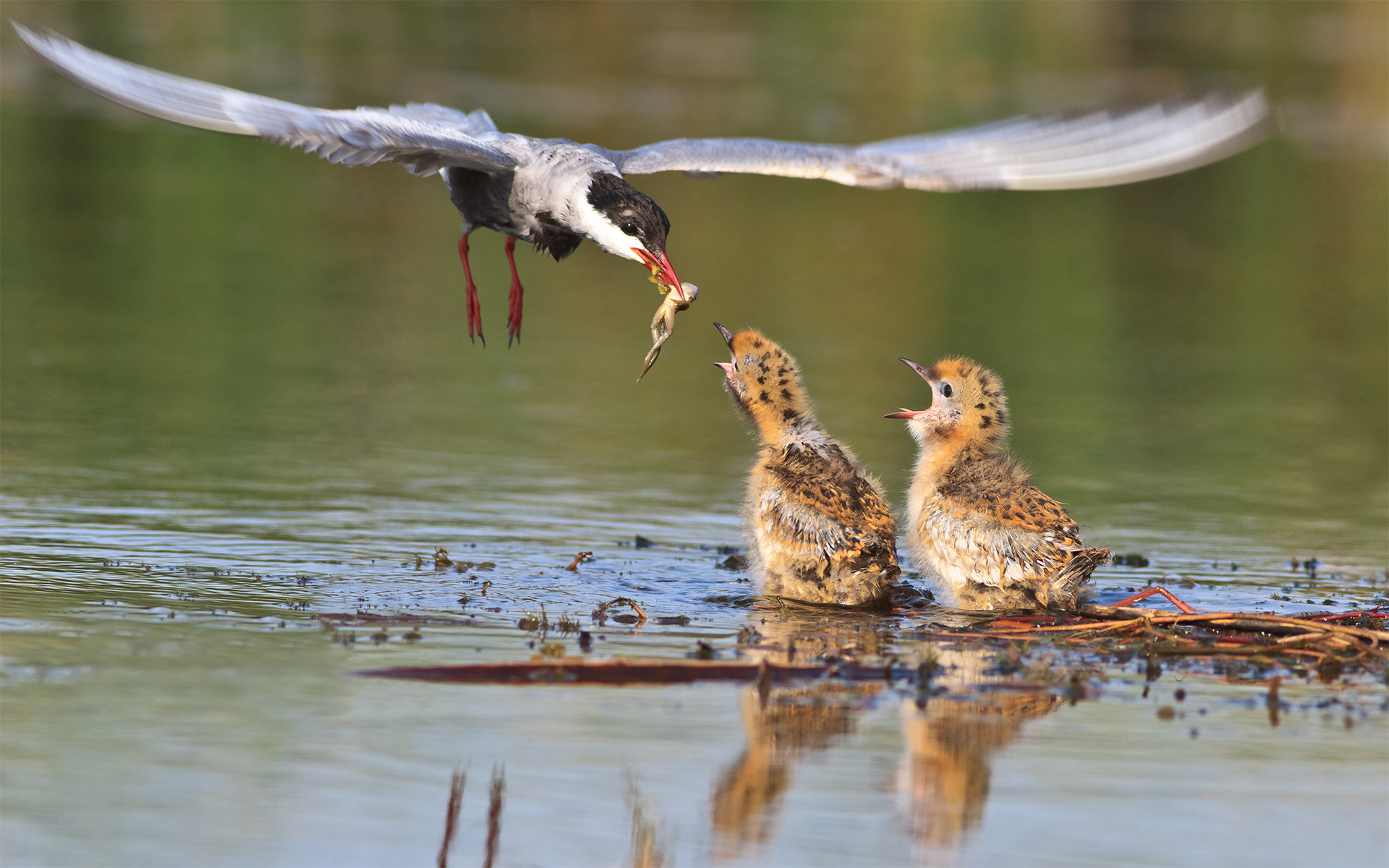
Common tern feeding chicks
Bird watchers and photographers will enjoy winter in Slimbridge as 30,000 wild wintering ducks, geese and swans can be found feeding and roosting on the reserve.
Spring brings new arrivals like swallows, house martins and summer warblers. Listen for the songs of chiffchaffs, reeds, sedge warblers and the distinctive call of the cuckoo.
In the summer, the wetlands bustle with activity as breeding season peaks. Visitors can observe, among others: kingfishers (Alcedo atthis), common cranes (Grus grus), and avocets (Recurvirostra avosetta). Lush habitats support a variety of waders and waterfowl, making it an ideal time for birdwatching.
As a research center, a quarter of Slimbridge is reserved for captive birds and breeding stock. Today, Slimbridge has the world’s largest collection of captive wildfowl (geese, ducks and swans) and maintains an excellent breeding record.
The center also breeds endangered species, such as the common crane, for reintroduction into the wild.
The refuge supports breeding colonies of four of the six known flamingo species and has a special pavilion for exotic ducks and various small birds.
>> Learn more about Cotswolds wildlife, weather, and more on our Know Before You Go page.

Northern gannets
The Shiant Isles: A Seabird Paradise
Further north along the flyway, in the remote waters of Scotland’s Hebrides, the Shiant Isles are a haven for seabirds. This archipelago, described as a “seabird city,” hosts millions of puffins, razorbills, and guillemots during the breeding season. These colonies represent some of the most vibrant birdlife in Europe and provide crucial nesting sites for species that migrate vast distances across oceans.
Located between Skye and Lewis, these columnar basalt islands are known in Gaelic as Na h-Eileanan Seunta, or the “Enchanted Isles.” This tiny island group is home to hundreds of thousands of seabirds, including a quarter-million puffins—2% of the entire global population. Some 7% of all razorbills in the UK breed here, along with colonies of guillemots, cormorants, shags and great skuas.
The Shiant Isles are also an example of successful avian conservation. Efforts to eradicate invasive predators, such as rats, have allowed seabird populations to recover and thrive. The islands’ rugged cliffs and grassy slopes now serve as safe havens for birds that face threats from climate change, overfishing, and pollution elsewhere.
Nat Hab’s Emily Goodheart reported from the Shiant Isles, “There were millions of puffins and razorbills! It felt like being in a wildlife documentary!”
>> Check out Scotland’s Wild Highlands & Islands to see millions of seabirds nest in some of the largest rookeries in the world.
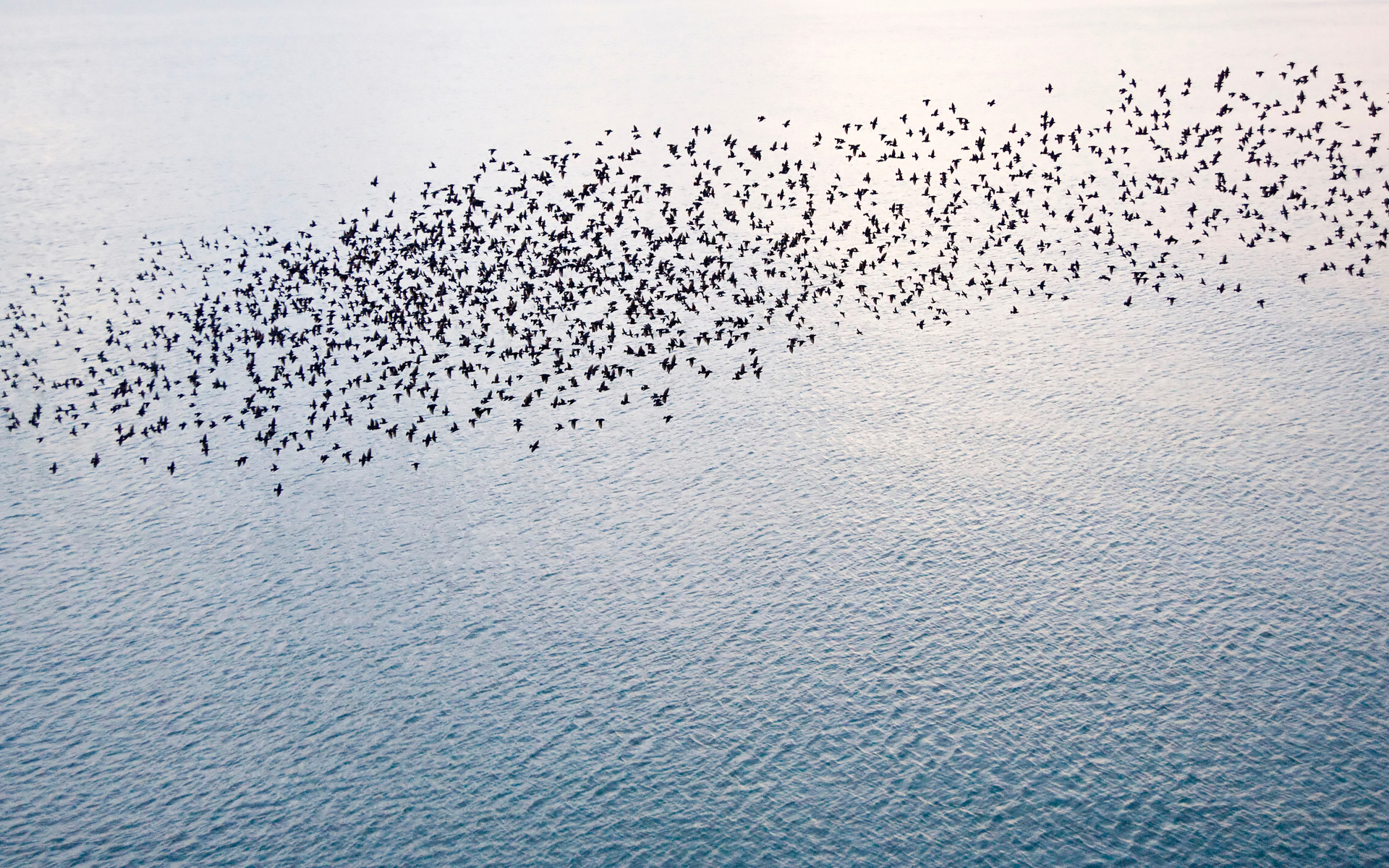
The migration of European starlings
Migratory Birds are Conservation’s Canary in the Coal Mine
Migratory birds are often referred to as indicators of environmental health. Their sensitivity to changes in climate, habitat, and food availability makes them an early warning system for broader ecological challenges.
As migration patterns shift, they reveal the pressures facing ecosystems worldwide. Population declines in long-distance migratory species, with some experiencing over 90% reductions since the 1970s.
Migration timing is tightly linked to environmental cues, such as daylight and temperature, which are being altered by climate change.
Phenological mismatches—where birds arrive at breeding grounds either too early or too late to align with peak food availability—are becoming more common. This misalignment can lead to reduced reproductive success and declining populations. Conservation interventions can help.
Conservation efforts targeting migratory birds benefit entire ecosystems. By protecting wetlands, forests, and other critical habitats, conservationists ensure not only the survival of birds but also the health of countless other species that share these environments.

How to Support Avian Conservation
As bird migration patterns shift, there are meaningful ways to help protect these species and the ecosystems they rely on. Here’s how you can make a difference:
- Participate in Citizen Science
Participate in bird counts, record sightings, and track migration patterns through initiatives like eBird or the British Trust for Ornithology’s surveys.
Your observations contribute valuable data that help scientists monitor population trends and guide conservation efforts. Advocacy also plays a key role—actively support policies that protect migratory birds and their habitats.
- Support Policy & Research on Habitat & Avian Conservation
Migratory birds depend on protected flyways, stopover sites, and breeding grounds to complete their journeys. Climate change, habitat destruction, and human development threaten these essential routes.
By supporting conservation policies, funding research, and advocating for stronger habitat protections, we can help safeguard the future of migratory species.
- Conservation Travel: Visit & Experience
See the magic of migration up close by visiting world-class conservation sites like Slimbridge Wetland Center or traveling to Scotland’s Shiant Isles, home to millions of seabirds.
Conservation travel directly supports habitat preservation and local conservation efforts, ensuring that these landscapes—and the birds that rely on them—remain protected for years to come.
Taking action through citizen science, policy advocacy, and conservation travel, we can all play a role in preserving the wonder of bird migration for generations to come.
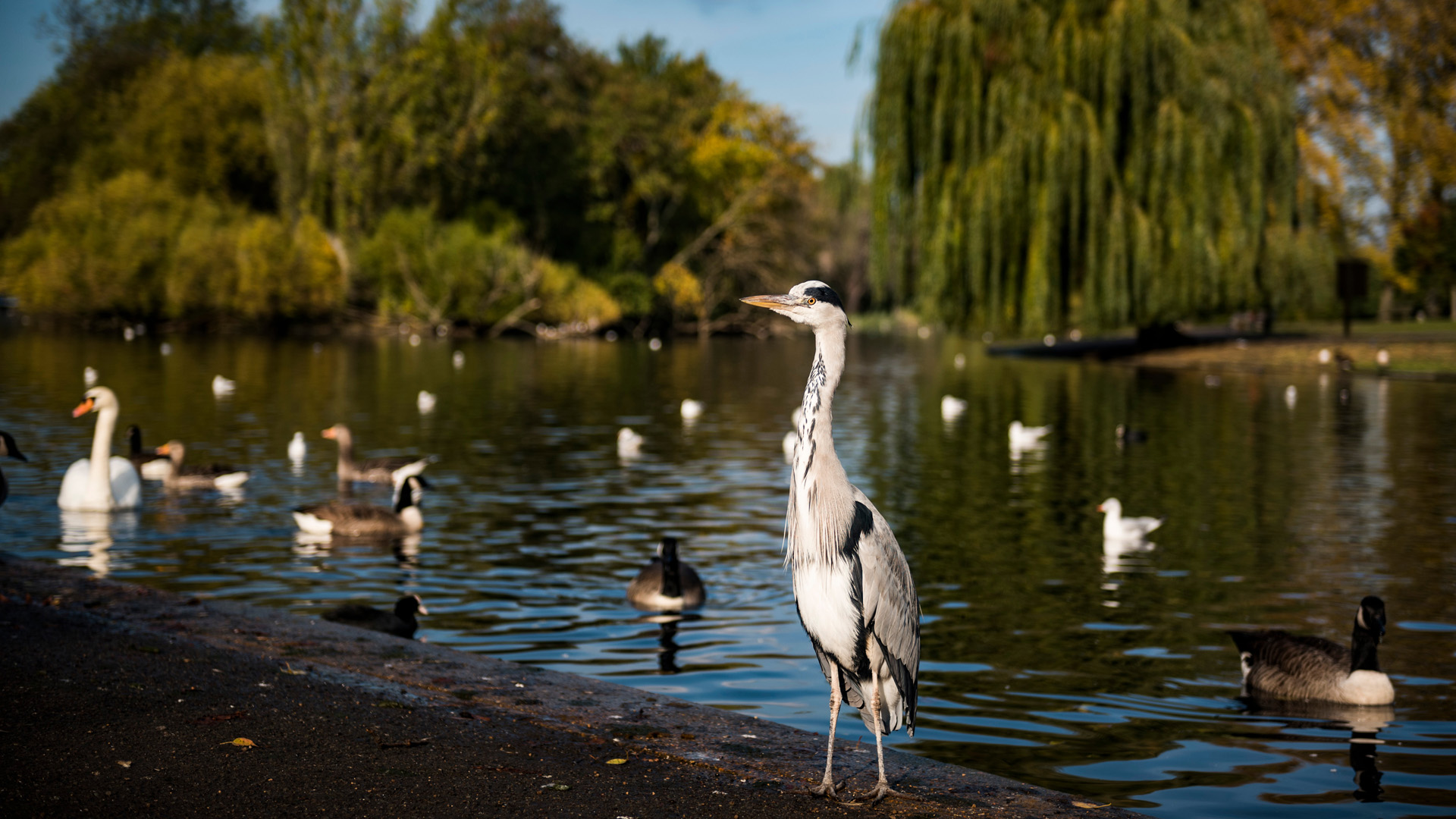
Heron, Regents Park, London
The post UK Birds and Conservation Travel: Shifting Patterns in Bird Migration first appeared on Good Nature Travel Blog.